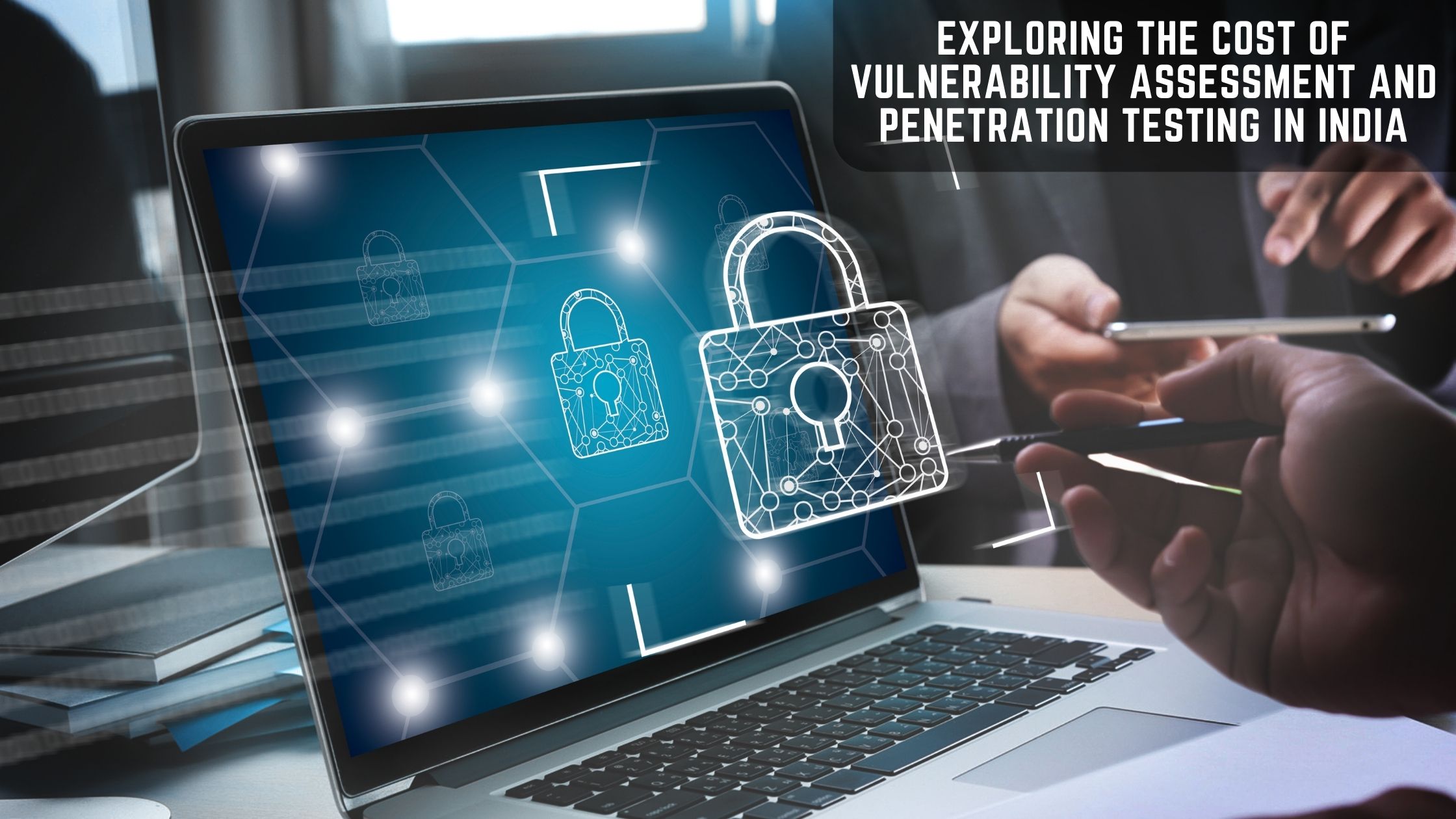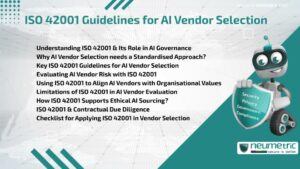Table of Contents
ToggleIntroduction
Vulnerability Assessment & Penetration Testing [VAPT] is a comprehensive approach to assessing & strengthening the security of an organisation’s digital infrastructure. It involves identifying vulnerabilities, assessing their potential impact & actively exploiting them to evaluate the system’s resilience against real-world attacks.
In today’s interconnected world, organisations face an ever-increasing number of cyber threats. VAPT plays a crucial role in identifying weaknesses in systems, applications & networks, allowing organisations to proactively address vulnerabilities before they can be exploited by malicious actors. It provides a comprehensive understanding of an organisation’s security posture & helps in building a strong defence against cyber attacks.
The purpose of this Journal is to explore the cost aspects of VAPT in India. By understanding the factors influencing VAPT costs & exploring different pricing models, organisations can make informed decisions about their cybersecurity investments. Additionally, the Journal will provide insights into cost-effective strategies that can help organisations optimise their VAPT expenditures.
Understanding VAPT
VAPT involves two essential components: Vulnerability Assessment [VA] & Penetration Testing [PT]. Vulnerability Assessment aims to identify vulnerabilities & weaknesses in an organisation’s systems, applications & networks. Penetration Testing, on the other hand, simulates real-world attacks to exploit identified vulnerabilities & assess the system’s ability to withstand such attacks. The objective of VAPT is to provide a comprehensive security assessment, combining both vulnerability identification & validation.
While Vulnerability Assessment focuses on identifying weaknesses, penetration testing goes a step further by actively exploiting those vulnerabilities to evaluate the system’s resilience. Vulnerability assessment is often automated & can be performed using various scanning tools. Penetration testing, however, requires skilled professionals who simulate real-world attack scenarios to assess the system’s ability to withstand those attacks.
Both Vulnerability Assessment & Penetration Testing are essential components of VAPT. Vulnerability assessment helps in identifying potential weaknesses & vulnerabilities, while penetration testing validates & verifies these vulnerabilities through controlled exploitation. Combining both aspects provides a more holistic & accurate understanding of an organisation’s security posture, allowing for targeted remediation efforts.
Factors Influencing VAPT Costs in India
The cost of VAPT is influenced by the scope & complexity of the IT infrastructure being assessed. Larger systems with intricate architectures require more time & effort to assess, leading to higher costs. The size & scale of the organisation also impact VAPT costs. Larger organisations often have more extensive IT infrastructures, which require more thorough assessments, resulting in higher costs compared to smaller organisations.
Different industries have specific compliance requirements that organisations must adhere to. These requirements may necessitate additional assessments & testing, leading to increased costs. Geographic locations & regulations can also influence VAPT costs. Different regions may have varying regulatory frameworks that organisations must comply with, requiring specific assessments & testing, which can impact the overall cost.
The frequency & depth of VAPT engagements also affect the cost. Regular assessments & deeper assessments may incur higher costs due to the increased time & effort involved. The expertise & reputation of the VAPT service provider can influence the cost. Established & reputable service providers with a track record of delivering high-quality assessments may charge higher fees for their services.
Cost Components of VAPT
Before conducting a VAPT engagement, pre-engagement activities & scoping are crucial. This includes defining the assessment objectives, scoping the systems & applications to be assessed & understanding the organisation’s specific requirements. These activities contribute to the overall cost of VAPT.
VAPT engagements often require the use of specialised tools & software. These tools may come with licensing fees, which are a part of the overall cost. The effort & time invested by VAPT professionals directly impact the cost. Skilled professionals with expertise in vulnerability assessment & penetration testing dedicate their time & expertise to conduct thorough assessments & this effort is reflected in the cost.
After completing the VAPT engagement, the service provider prepares comprehensive reports & documentation outlining the findings, vulnerabilities & recommended remediation actions. These reporting & documentation activities contribute to the overall cost. Post-engagement support & remediation activities, including assisting the organisation in addressing identified vulnerabilities, can incur additional costs. These costs may vary depending on the severity & complexity of the vulnerabilities discovered.
Different Pricing Models for VAPT in India
In the fixed-price model, the VAPT service provider offers a predetermined cost for a specific assessment or package. This model provides clarity on the cost upfront, allowing organisations to budget accordingly.
The time & materials model charges based on the effort & resources utilised during the VAPT engagement. This model is suitable when the scope of the assessment may evolve over time or when the organisation requires flexibility in terms of the resources allocated.
The subscription-based model offers recurring VAPT services at a fixed interval, such as quarterly or annually. Organisations pay a regular subscription fee to receive continuous security assessments. This model provides ongoing security coverage & allows organisations to budget predictably.
Some VAPT service providers offer customised pricing based on the specific requirements of the organisation. This model allows organisations to tailor the VAPT engagement to their unique needs & negotiate pricing based on the scope & complexity of the assessment.
Cost Variations Across VAPT Service Providers
VAPT service providers’ pricing can vary based on their reputation & expertise in the industry. Established & renowned service providers may charge higher rates, reflecting their experience, track record & the value they bring to the table. Service providers may offer different pricing models & packages, allowing organisations to choose the one that aligns best with their needs & budget. These variations can result in differences in overall costs.
While cost is an important factor in choosing a VAPT service provider, organisations should also consider the quality of deliverables. Assessing the reputation, experience & track record of the service provider ensures that the cost reflects the value received.
Cost-Effective Strategies for VAPT in India
To optimise VAPT costs, organisations can prioritise critical assets & high-risk areas. Focusing on these areas ensures that resources are allocated efficiently, addressing the most significant security risks first. Automation & open-source tools can help reduce VAPT costs. These tools provide efficiency & cost-effectiveness by automating certain assessment processes & eliminating the need for expensive proprietary software.
Regular & periodic VAPT assessments can be more cost-effective in the long run. By identifying & addressing vulnerabilities early on, organisations can prevent more significant security incidents & reduce the overall remediation costs.
Managed VAPT services offer ongoing support & monitoring at a predictable cost. These services provide continuous security assessments, ensuring that organisations stay protected against evolving threats without incurring additional expenses for each engagement. Collaborating with VAPT professionals on an ongoing basis can help organisations optimise costs. Building a long-term relationship with trusted professionals allows for continuous support, customised engagements & potential cost savings.
Conclusion
This Journal encompassed various influences on VAPT costs, such as the complexity of IT infrastructure, organisation size, compliance requirements, geographic considerations, engagement frequency & service provider expertise. Understanding these factors is pivotal for organisations to make informed decisions regarding their investments in cybersecurity. By acknowledging the components that contribute to VAPT costs & evaluating different pricing models, organisations can optimise their spending & maximise the value derived from their investments.
Investing in VAPT is of paramount importance for organisations seeking to strengthen their digital defences. It adopts a proactive approach to identify & address vulnerabilities, ensuring comprehensive cybersecurity & reducing the risk of potential cyber attacks.
To conclude, organisations in India should recognize the significance of VAPT & view the associated costs as a worthwhile investment in their cybersecurity posture. By prioritising security, employing cost-effective strategies & collaborating with reputable service providers, organisations can achieve comprehensive protection against cyber threats. Given the constantly evolving threat landscape, sustained vigilance & proactive measures are imperative, making VAPT an indispensable practice for organisations aiming to fortify their digital defences.
Neumetric, as a cybersecurity service provider, can offer its expertise & services in the context of VAPT in India. Neumetric specialises in vulnerability assessment & penetration testing, making it well-suited to assist organisations in enhancing their cybersecurity defences. Here’s how Neumetric can provide its services:
- Comprehensive VAPT Assessments: Neumetric can conduct thorough assessments of an organisation’s IT infrastructure, including networks, systems, applications & databases. By employing advanced tools & techniques, Neumetric identifies vulnerabilities & potential entry points that could be exploited by malicious actors.
- Customised Approach: Neumetric understands that each organisation has unique requirements & security concerns. Hence, Neumetric can tailor its VAPT services to align with the specific needs of the client. Neumetric works closely with organisations to define the scope, objectives & engagement frequency, ensuring a customised approach that maximises the effectiveness of the assessment.
- Experienced Professionals: Neumetric has a team of skilled cybersecurity professionals with extensive experience in conducting VAPT assessments. These experts possess in-depth knowledge of the latest vulnerabilities, attack vectors & industry best practices. Their expertise allows them to identify both common & obscure vulnerabilities that may exist within an organisation’s infrastructure.
- Advanced Tools & Methodologies: Neumetric utilises cutting-edge tools, technologies & methodologies to perform VAPT assessments. These tools enable comprehensive scanning, testing & analysis of systems & applications, ensuring a thorough evaluation of potential vulnerabilities. Neumetric stays updated with emerging threats & leverages the latest tools to provide accurate & relevant findings.
- Detailed Reporting & Recommendations: Neumetric provides detailed reports & documentation of the VAPT findings, including identified vulnerabilities, their severity & recommended remediation actions. These reports help organisations understand their security posture & prioritise remediation efforts effectively. Neumetric’s experts can also offer guidance & recommendations for strengthening the overall security infrastructure.
- Post-Engagement Support: Neumetric understands that addressing vulnerabilities is an ongoing process. Hence, the company offers post-engagement support to assist organisations in remediation activities. Neumetric’s experts collaborate with the organisation’s IT teams, providing guidance, best practices & assistance in implementing the recommended security measures.
- Compliance Assistance: Neumetric is well-versed in industry-specific compliance requirements, such as GDPR, HIPAA, PCI DSS & ISO 27001. The company can help organisations align their security practices with regulatory standards, ensuring compliance & reducing the risk of penalties or data breaches.
- Continual Improvement: Neumetric emphasises continual improvement in cybersecurity practices. Beyond one-time assessments, the company encourages organisations to engage in periodic VAPT assessments to stay ahead of evolving threats. Neumetric can establish long-term partnerships, offering ongoing support, monitoring & guidance to enhance an organisation’s security posture over time.
FAQs:
Is it necessary to take a VAPT?
While VAPT is not legally mandated, it is highly recommended for organisations aiming to enhance their cybersecurity posture. VAPT helps identify vulnerabilities before they can be exploited by attackers, reducing the risk of breaches & financial losses.
How much does Pentest cost in India?
The cost of a Penetration Test in India can vary based on factors like the size & complexity of the IT infrastructure, scope of the assessment & the service provider’s expertise. Prices typically range from a few thousands to several lakhs.
How much does a VAPT cost?
The cost of a Vulnerability Assessment & Penetration Testing [VAPT] in India depends on factors such as infrastructure complexity, organisation size, industry compliance requirements, engagement frequency & the service provider’s reputation. Costs can range from a few thousands rupees to several lakhs, depending on the project’s scope & requirements.
Does Vapt increase ROI on security?
Yes, VAPT can significantly improve the Return on Investment [ROI] for security. By identifying vulnerabilities & implementing remediation measures, organisations can reduce the risk of costly security incidents, data breaches & financial losses. Proactive security measures, such as VAPT, can save organisations substantial amounts in potential damages & reputational harm.
How do I get a VAPT certificate?
VAPT certificates are not universally standardised or issued by a single authority. However, organisations can request a detailed VAPT report from their service provider, which can serve as evidence of the assessment. Additionally, industry certifications such as Certified Ethical Hacker [CEH] or Offensive Security Certified Professional [OSCP] demonstrate the skills & knowledge in VAPT. Individuals can pursue these certifications through recognized training providers & pass the associated exams to earn a VAPT-related certificate.





